|
Author
|
Message
|
|
mgcookwv
|
|
|
Group: Forum Members
Last Active: 3 Months Ago
Posts: 150,
Visits: 282
|
I asked a Holley rep to recommend a carb for me, I told him I put a new distributor, 57 manifold on my 55 Fairlane v8 272 y-block and he recommended a 0-8007 4 barrel 390 cfm so that's what I bought, I have had a terrible time to get the carb right, he vendor I bought it from just told me to send it back and he would refund my money.
My question has anyone on the forum used this carb with a 272 with a 57 Ford intake and ha success with it? When I price this particular carb and put in a 55 or 57 Ford it states this carb is not compatible with the car. Someone please help if you can.
God Bless.
|
|
|
|
|
57RancheroJim
|
|
|
Group: Forum Members
Last Active: Last Year
Posts: 729,
Visits: 112.0K
|
Can you explain what issue you are having? Did you use a later distributor with mechanical advance?
I've been running 390CMF on my 292 for three years without a problem. I did go up two jets sizes.
|
|
|
|
|
oldcarmark
|
|
|
Group: Forum Members
Last Active: Yesterday
Posts: 3.7K,
Visits: 32.6K
|
I have this setup on my 56 with 292 and Fordomatic and it works great. I used 56 main Jets and switched the inlet Needle+Seat to all Steel as used on non Gas Applications. I do have a Fuel Pressure Regulator because Holley Carbs don't like a lot of Fuel Pressure. Later Distributor modified with light Springs for full Centrifugal Advance all in by 2500 RPM. 8 Degrees initial Timing Advance, 8 Degrees Max Vacuum Advance, and 26 Degrees of Centrifugal Advance. These 390 CFM Carbs are a very good Carb to use on a basically stock 272-312 Engine. It is very important to initially set the position of the Throttle Plate so that no more than a Square of the Fuel Transition Slot shows below the Throttle Plate. This is adjusted using the idle Speed Screw. If more than a Square of the Transition Slot is exposed You will never get the Idle Mixture Set properly. Fuel is being drawn from transition Circuit if more than a Square of the slot is exposed. Resist the Temptation to turn the Idle Speed Screw to get a higher Idle Speed. Initial Idle Speed setting should get the Idle Speed around 550-600 RPM. Adjust the Mixture Screws for highest smooth Idle. If Speed is excessive back off the Idle Speed Screw. Do NOT turn the Screw to raise the Idle speed. My suggestion is start over with the Carb. Make sure the dry and wet Float Level is correct and set the position of Idle throttle Plate before You install the Carb. Make a note of how far to turn the Speed Screw after it contacts the Throttle Lever to get the correct exposure of the slot so You don't have to remove the Carb if You turn the speed up despite the fact that it should not be turned up after the Engine is running. Also because You also changed the Manifold check for any Vacuum Leaks if you are still having trouble getting the Carb adjusted.
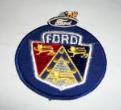 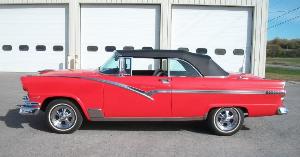
|
|
|
|
|
GREENBIRD56
|
|
|
Group: Forum Members
Last Active: Last Year
Posts: 1.7K,
Visits: 102.7K
|
Here is an illustration of the idle transfer slot - its set up with the carb off the engine. I know that virtually every person who ever tried to tune a Holley four barrel carb has tried at least once, adjusting idle speed with the primary throttle blade setting alone. Wrong. On these 4160 type four barrels - that is best done by 'tweaking the position of the secondary blades. If the transfer slot coverage is not properly set - you will have a tough time - every time............ Holley used to send reps out to the various speed shops and put on clinics (circa 1960's) - those guys knew how to get an outfit working in a hurry. Now days - maybe U-tube - but experienced Holley tuners know how to do this. . 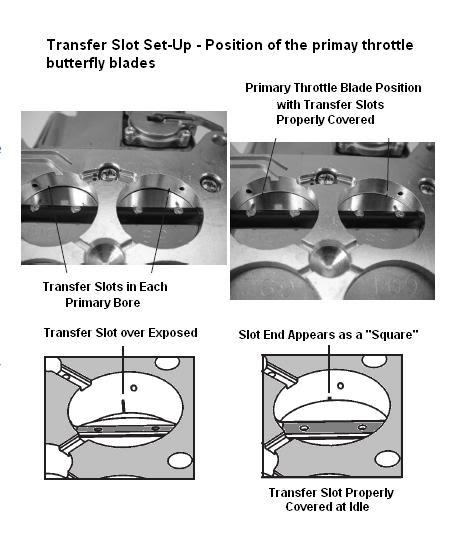 If you go through the set-up instructions for the Holley 390 carb - it will mention this. 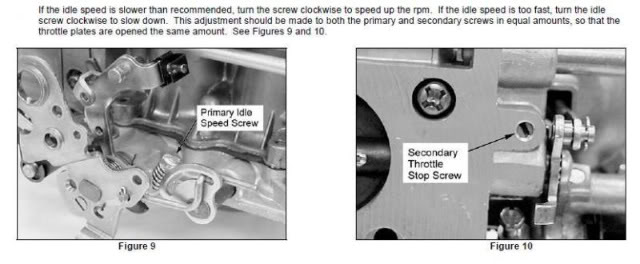 The secondary throttle stop screw is located under the base plate of the carb - visible from underneath when inverted - directly below the vacuum secondary pot's attachment to the rear throttle shaft. There are several methods of dealing with this - and virtually every four-barrel carb manifold intended for use with a Holley has a clearance opening under the base at that location. I have replaced the screw with an "Allen" type set-screw and used that to turn the screw upward with the carb bolted on the manifold. I have bent the tab on the throttle shaft with needle nose pliers (a hillbilly method from my youth). And finally - I've used a long screw of the same size and pitch - cut off to be a tiny bit of "all-thread" and sticking out below the carb flange. It can then be grabbed with needle nose pliers and turned while the carb is in place. Each secondary bore has a single hole where fuel is being dribbled out of the rear bowl - this adjustment provides the idle air for that mixture. You will also find that the throttle return springs within these carbs - will defeat the springs in the stock auto-trans "kick-down" mechanism - and that will take some tweaking to make it work.
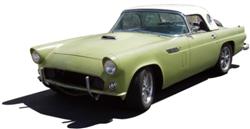
Steve Metzger Tucson, Arizona
|
|
|
|
|
mgcookwv
|
|
|
Group: Forum Members
Last Active: 3 Months Ago
Posts: 150,
Visits: 282
|
I can't get enough throttle on the carb plus it's very slow taking off like it can handle just so much gas and then is okay after it gets to speed but if you give it too much gas taking off it will slow down considerably or and backfire,
|
|
|
|
|
oldcarmark
|
|
|
Group: Forum Members
Last Active: Yesterday
Posts: 3.7K,
Visits: 32.6K
|
Have You checked the main Jets to ensure they are at least a .54 or.56 Size? When I got mine the Jets were .48 and it would start and Idle but wouldn't go any faster than about 25 MPH until the the Jets were upsized to .56.Have You checked the Timing to make sure it is advancing as the RPM's increase? This can be done using a Timing Light with the Car stationary. As the RPM is increased the timing should advance when checked at the Damper. Leave the vacuum Line attached when You check it. When You depress the Gas Pedal to floor(with Engine off) does the throttle plate open fully? You may have to modify or change the Rod that goes to the Carb in order to get full opening of the Throttle Plate. Was You Car originally a 2 Barrel Version? The reason I ask about the Timing Advance working is that there is a Post by brettnelson about 10 Topics back where the Distributor He purchased was not advancing properly. Personally if that had been Me the Distributor would have been returned and ask for a replacement before I purchased another Advance unit out of my Pocket when I just paid for a replacement Distributor which was defective.. As the Throttle is opened up more the Timing MUST advance in order to fire the Fuel/Air mixture.
 
|
|
|
|
|
GREENBIRD56
|
|
|
Group: Forum Members
Last Active: Last Year
Posts: 1.7K,
Visits: 102.7K
|
Mr. Cook - I'm afraid you just aren't going to get a good answer to this on the web - you are going to have to find a real live competent mechanic to methodically set up both the carb and ignition. Good Luck! Seems to be like finding a decent physician these days.....not many around.
If the idle slot isn't set-up as described above - the Holley carb just won't transition correctly from idle to run. If the backfires have been severe enough - the power valve may be ruptured. If there is enough alcohol in your fuel to stick a Viton needle and seat - you may need to go to the steel versions to get the fuel bowl levels to be stable. If the ignition timing is way off - the engine just might be backfiring on account of that - or maybe crossed plug wires. Probably not just one thing to work out - nor some instant fix - it will take a methodical man who knows how it has to work.

Steve Metzger Tucson, Arizona
|
|
|
|
|
miker
|
|
|
Group: Forum Members
Last Active: Last Month
Posts: 1.9K,
Visits: 194.9K
|
I've got to agree with Steve, it's likely more than one item. That said, I got a Holley new, years ago, that was 10 jet sizes lean. Had very much your systems. If Mark had to go up from 48 to 56, that might be worth a shot first. Changing Holley jets isn't tough, and checking the transfer slot (were it's set right now) also isn't tough with the carb on the bench.
miker
55 bird, 32 cabrio F code
Kent, WA
Tucson, AZ
|
|
|
|
|
Ted
|
|
|
Group: Administrators
Last Active: Yesterday
Posts: 7.5K,
Visits: 205.8K
|
mgcookwv (7/29/2016)
I asked a Holley rep to recommend a carb for me, I told him I put a new distributor, 57 manifold on my 55 Fairlane v8 272 y-block and he recommended a 0-8007 4 barrel 390 cfm so that's what I bought, I have had a terrible time to get the carb right, he vendor I bought it from just told me to send it back and he would refund my money.
My question has anyone on the forum used this carb with a 272 with a 57 Ford intake and ha success with it? When I price this particular carb and put in a 55 or 57 Ford it states this carb is not compatible with the car. Someone please help if you can.
God Bless.You said new distributor but did not clarify exactly which one it was. What distributor are you running and how do you have the vacuum advance line hooked up?
  Lorena, Texas (South of Waco) Lorena, Texas (South of Waco)
|
|
|
|
|
chris70
|
|
|
Group: Forum Members
Last Active: 3 Months Ago
Posts: 41,
Visits: 50.1K
|
Do you have a carburetor spacer?You can't bolt the carb directly to the manifold,or it wuold happen what you describe,a giant vacuum hole!!!Guess how i know?????
You need something like a Moroso 64945 with 1.467 in. bore hole sizes, 390's are delivered with .51 main jets that should be enought for a stock 272,check the plugs if it is too lean upgrade 2 sizes untill it runs smooth.
|
|
|
|